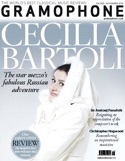Texte paru dans: / Appeared in:
*

GRAMOPHONE (11/2014)
Pour s'abonner /
Subscription information
| Warner Classics2564639411 | Hungaroton HCD32732 |
 |
 |
Code-barres / Barcode: 0825646394111 Consultez toutes les évaluations recensées pour ce cd Reach all the evaluations located for this CD |
Code-barres / Barcode: 5991813273222 Consultez toutes les évaluations recensées pour ce cd Reach all the evaluations located for this CD |
Reviewer:
Caroline
Gill
If there is one thing all cellists agree on, it is that the Bach cello suites are not repertoire that should be committed to disc until you can produce a performance that is underpinned by a clear sense of musical intention and, to that end, Nina Kotova’s playing is still a little inconsistent. When she hits her stride her playing shows considerable poise, but when she does not it sounds too angry to be artistically generous. There needs to be a good reason to add to the overstuffed catalogue of versions of the cello suites, and here the unhelpful proximity and brightness of the recording is so extreme that every subtlety that is missed is amplified to the point of unfair impression of artistic merit. There is a strong sense of individuality and strength in Kotova’s playing but this is still manifest more as a desire to control the music than to allow it to control without a surrender of integrity. Moreover, it is a control that is exerted with such force that it also occasionally bends the tuning out of shape and loses a certain amount of precision and finesse in the phrasing.
It makes for a stressful listen,
when far less frustrating is Ditta Rohmann’s unassuming performance on
Hungaroton. As does Isabelle Faust in her superlative solo Bach recordings (Harmonia
Mundi, 6/10, 11/12), Rohmann uses metal strings but a Baroque bow, with which
she attains an authentically Baroque clarity and cleanness but without the
lurking threat that too much pressure on the string inevitably brings. Rohmann
is also able to keep the tempi nimble where needed but to create an expansive
expressiveness in the slower movements, which is particularly noticeable in the
mercurial Second Suite. Her unusual but historically informed ordering of the
Suites ends with the most complex, the Sixth, which she plays on a five-string
piccolo cello. This retains the original chordal textures, placing of open
strings and resulting harmonic effect that combine to create a ghostly sound
that brings yet another facet to these masterworks, and brings to an end a
project that should file Rohmann’s two volumes (the first was reviewed in May)
on the shelf under ‘definitive’.
Fermer la fenêtre/Close window
Cliquez l'un ou l'autre
bouton pour découvrir bien d'autres critiques de CD
Click either button for many other reviews


